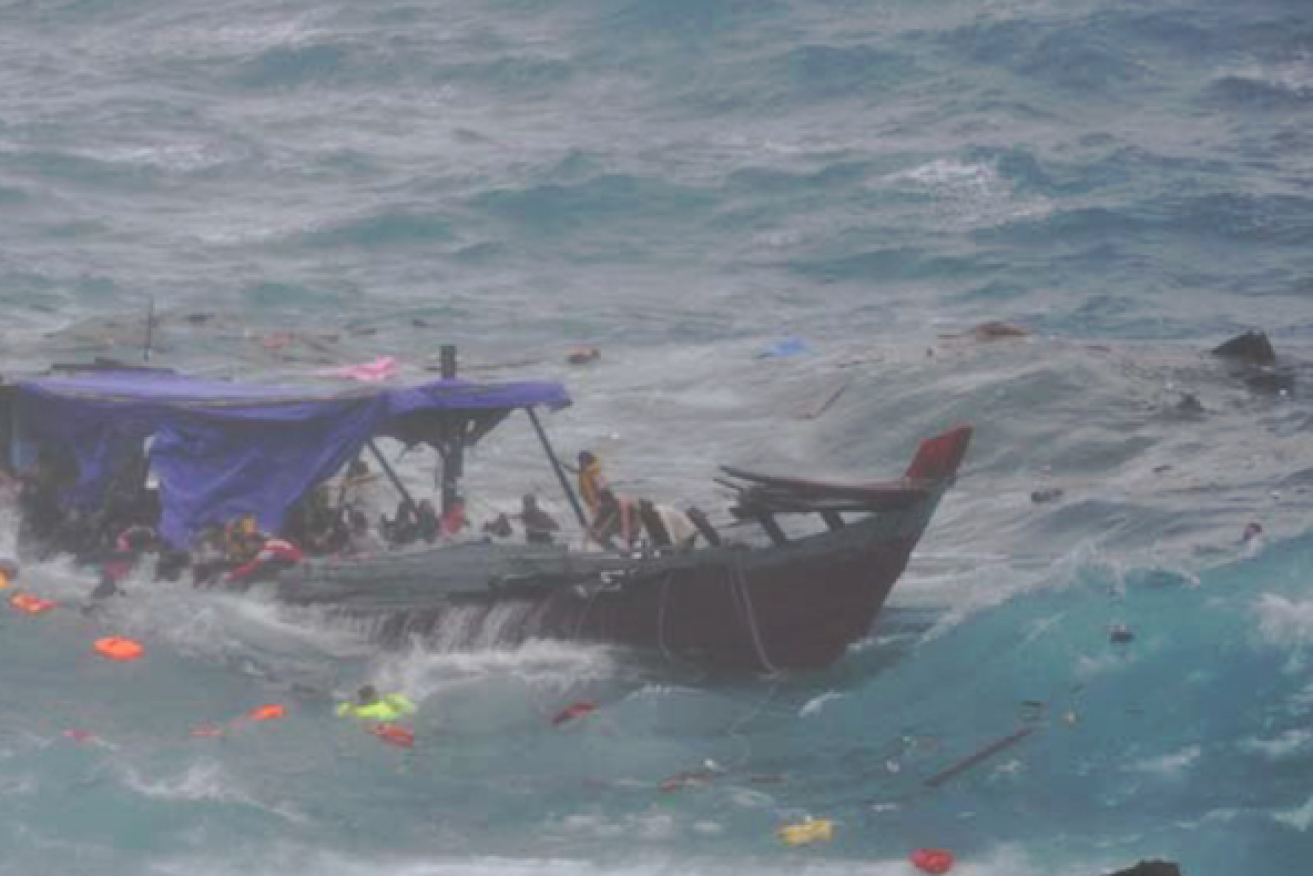The cost of ‘stop the boats’ can’t be quantified


The Siev 221 disaster on Christmas Island in 2010 reignited refugee debate. Photo: AAP
ANALYSIS
With the Manus Island detention centre slated for closure, the full disgrace of Australia’s offshore detention system is finally being exposed.
Fairfax political writer Adam Gartrell should be congratulated for piecing together a fact previously hidden from voters by their elected representatives – the staggering cost of this cruel system.
Gartrell used numerous documents dug up by staff in the Parliamentary Library to estimate that the average cost of each detainee in the past four years was around $1 million.
However, as useful as that figure is, it is only a small part of the cost of this failed policy.
I will focus below on the economic costs of these policies, though of course I share the moral outrage felt by many Australians – see, for instance, this article written at the time of the ‘boats debate’ in 2012.
Opportunity cost
At the heart of economic thinking is the notion that when somebody chooses a course of action, the benefit of the next-best option is lost.
If you take a job for $20 an hour, you might pass up a job paying $15 an hour. Common sense tells you, however, you took the right job.
But if the benefit you receive from a decision is lower than the benefit foregone, you’ve made a mistake.
In the case of refugee policy, the benefits that would have flowed from the ‘next best option’ were clearly higher than the Nauru/Manus option parliament ultimately pursued.

Rob Oakshott used a private member’s bill to try to broaden refugee policy. Photo: AAP
Back in June 2012, literally hundreds of refugees were drowning at sea, and some deterrent to the harmful boom in people smuggling had to be found.
Then-independent MP Rob Oakeshott, working with a cross-party committee, decided that offshore processing on Nauru should be augmented with a version of Labor’s ‘Malaysia solution’.
The latter policy would have returned 800 male refugees to Malaysia, as a start, in return for 4000 legitimate, processed refugees taken from camps within that country.
The Malaysian ‘people swap’ was to be a 12-month trial. The minority Gillard government supported Oakeshott’s private member’s bill and passed it in the lower house with the help of independents Bob Katter and Andrew Wilke.
However, it was voted down in the Senate by the Coalition and Greens – a situation made worse when Kevin Rudd was voted back as Prime Minister in 2013. He cynically tried to out-flank the right of politics by declaring no seaborne arrival would ever be settled in Australia.

Tony Abbott, as opposition leader, made ‘stop the boats’ a political mantra. Photo: AAP
Many people – even Tony Abbott who as opposition leader blocked the Oakeshott bill – are realising what a costly mistake that was in both humanitarian and fiscal terms.
Airborne refugees
There were major problems with the Malaysia solution – the biggest being that if only males were ‘swapped’, the next wave of boats would be filled with even more women and children.
Whole families would have to be swapped, and although that’s an ugly prospect, it’s important to remember that women and children in Malaysia’s refugee camps crave resettlement too. Under the Oakeshott proposal, they would have been flown to Australia in five times the numbers.
And even if tens of thousands of refugees were ‘swapped’ back into Australia, the policy would have produced much better fiscal, humanitarian and economic outcomes.
Refugees are not just a ‘cost’
Australia does spend, in some cases, tens of thousand of dollars supporting individual refugees – through its world-leading Adult Migrant English Program, through housing assistance, healthcare and education.

Refugees welcome. Photo: Getty
But these programs do not produce long-term wards of the state – and they certainly don’t cost anything like the $1 million per-person we’ve spent in four years running the grotesquely cruel Manus detention centre.
Money spent on Australia’s humanitarian refugee intake isn’t wasted. It produces hard workers, small business owners, contributors to the cultural industries, and sometimes even the ‘captains of industry’. Just ask Australia’s richest refugee arrivals – Frank Lowy and Harry Triguboff.
Antagonising the neighbours
Finally, there is a hidden cost in the reputational damage the ‘stop the boats’ policy has done in trade and diplomatic circles.
Australia’s economic future depends on trade with neighbours who have heard one message very clearly from the south.
That message is that Australia insists on a unilateral response to the refugee crisis afflicting our region – in defiance of departmental and expert advice such the Houston Report.
South-east Asia gets the message that Australia can’t help create a true regional solution – not because we’re too poor to help, but because we’re too rich.
Australia’s refugee policies since the Tampa crisis of 2001 have been a failure in purely fiscal terms – we’ve spent too much.
They’ve been a failure in humanitarian terms.
They’re an ongoing embarrassment in diplomatic and trade terms.
And they have destroyed the lives of legitimate refugees – the kind of people we know from experience would not only make an economic contribution to the nation, but who would make bloody good Aussies too.








